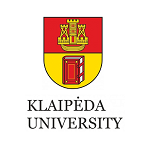LABORATORY EXERCISE TO DETERMINE CONTRAST IN LASER MARKING OF ARTICLES
Last modified: 05.04.2019
Abstract
The laser marking has been established in recent years as one of the modern innovative methods for marking many industrial products. The report examines a new laboratory exercise for the subject Laser Technology, studied in some technical universities. A new approach is proposed to determine the contrast of the laser marking process. Described is the purpose and the main tasks as well as the new skills and knowledge that students can exercise through this laboratory exercise. Students implement a test matrix consisting of squares of a certain size using the raster marking method. Through the new laboratory exercise, students can explore and analyze the dependencies of the contrast of laser markings on different dimensions influencing the technological process. The capabilities of the new approach allow learners to become more familiar with the factors that influence the modern process of laser marking widely used in modern industry. The results of the experiments the students summarize using a new modern digital approach to analyze the contrast against the background of the marked surface. From the experimental graphical dependencies of the variation of the power and speed contrast, they draw conclusions about the optimal process parameters.
Keywords
References
Adams R. (2014), BarCode 1, Adams Communications, 26.01.2014, http://www.adams1.com/stack.html
Kapur, N., Abbott, S.J., Dolden, E.D, & Gaskell, P.H. (2013). Predicting the Behavior of Screen Printing. IEEE Transactions on Components, Packaging and Manufacturing Technology, 3, 3, 508-515.
Optech Consulting. Retrieved from www.optech-consulting.com/html/laser_market_data.html
Pan, J., Tonkay, G.L., & Quintero, A. (1998). Screen Printing Process Design of Experiments for Fine Line Printing of Thick Film Ceramic Substrates, Proceedings of SPIE - The International Society for Optical Engineering, 9(3).
Pauli, G. (2010), The Method behind the Mark, Small Arms Survey, 1.
Pontius, N. (2012). Data Matrix Codes vs. QR Codes, Barcode Labels. Retrieved from https://www2.camcode.com/asset-tags/barcodes-data-matrix-vs-qr-codes/
Qi, J., Wang, K.L., & Zhu, Y.M. (2003). A study on the laser marking process of stainless steel, Journal of Materials Processing Technology, 139, 1-3, 273-276.
Sobotova, L., & Demec, P. (2015). Laser Marking of Metal Materials, Modern Machinery Science Journal, 808-812.
Wang, D., Yu, Q., & Zhang, Y. (2015). Research on laser marking speed optimization by using genetic algorithm. PloS one, 10(5), e0126141.
Ангелов, Н. (2011), Оптимизация на процеса маркиране с лазерно лъчение на образци от инструментална стомана, Дисертационен труд за придобиване на степен ДОКТОР, ТУ – Габрово
Валиулин, А., С. Горный, Ю., Гречко, М., Патров, К., & Юдин, В.Ю. (2003). Лазерная маркировка материалов, Научно-технический журнал ФОТОНИКА, 3, 16-22
Pontius, N. (2012). Data Matrix Codes vs. QR Codes, Barcode Labels. Retrieved from https://www2.camcode.com/asset-tags/barcodes-data-matrix-vs-qr-codes/








